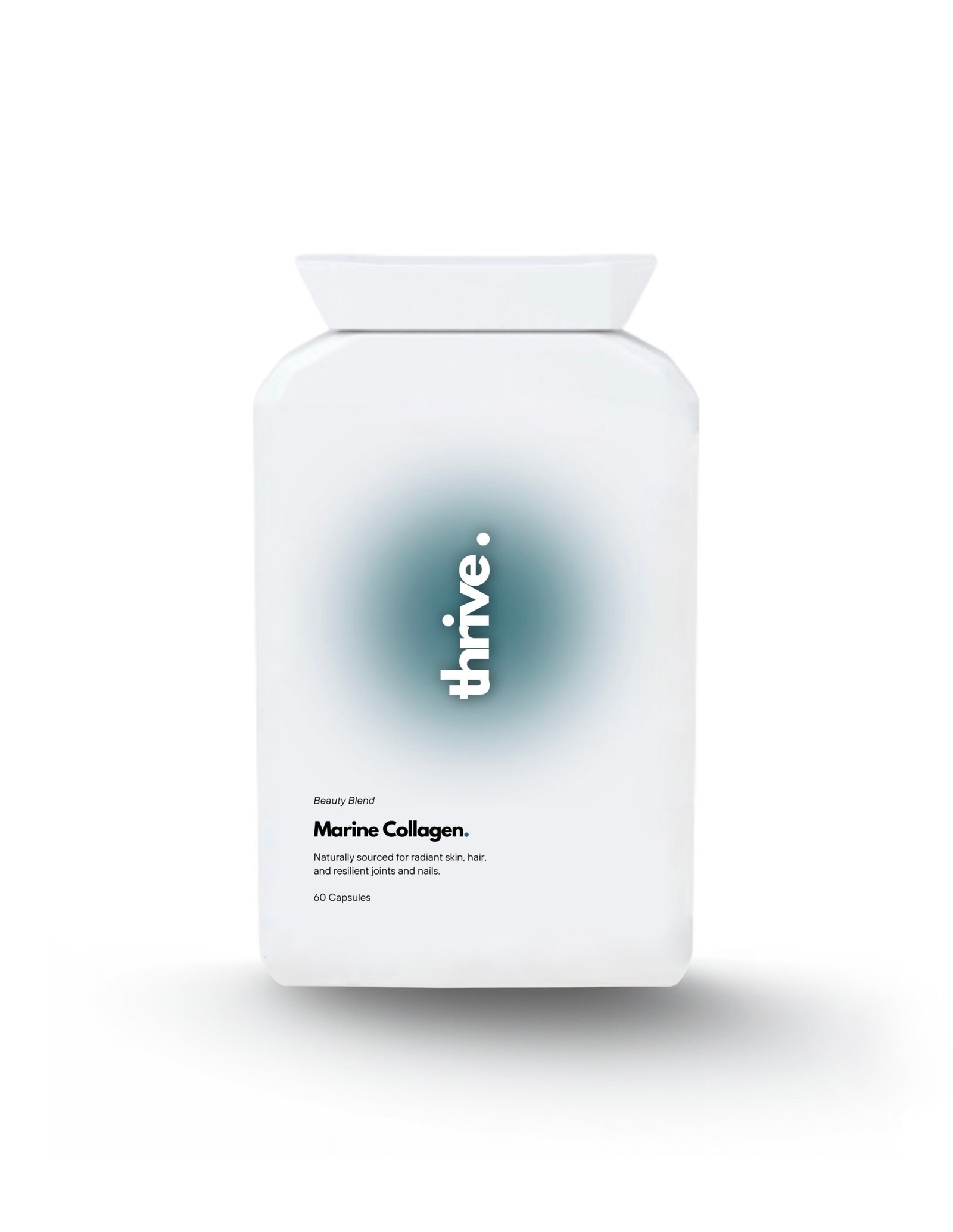In the realm of wellness and beauty, few ingredients command as much attention and admiration as marine collagen. Derived from the depths of the ocean, marine collagen is renowned for its transformative properties, offering a wealth of benefits for both inner vitality and outer radiance.
There are at least 28 types of collagen depending on its structure, but 80–90% of the collagen in the body consists of types I, II, and III. The most abundant type of collagen in the body, type I, can be found in the bones, skin, tendons, and organs. Type II can be found in cartilage, and type III can be found in reticular fibers, blood, and skin. Marine collagens such as fish skin, bone, cartilage, and scales, is the most bioavailable source compared to bovine (cow) or porcine (pig) collagen.

Propelled by modern scientific advancements, marine collagen stands as a beacon of rejuvenation in an ever-evolving landscape of health and skincare. Embark on a voyage as we explore its fascinating history, intricate production process, and dispel the myths surrounding this marine-derived marvel.
Delving into the Depths:
The history of marine collagen is deeply intertwined with humanity’s relationship with the sea. Dating back centuries, coastal communities around the world discovered the oceans remarkable healing properties. Fishermen and indigenous people recognised the value of marine life not only as a source of sustenance but also as medicine.
Furthermore, in ancient civilisations such as China and Japan, seaweed and fish-based remedies were commonplace. In Japan, crushed fish scales, particularly from species like the herring or carp, were incorporated into cosmetic powders and applied to the face and body to create a radiant glow. In China, fish oil obtained from fat was often applied topically to soothe dry, irritated skin to protect against environmental damage, such as harsh weather conditions.

Modernisation:
Fast forward to the early 20th century, and scientific exploration sheds a new light on the biological composition of marine organisms. Researchers began to unravel the complex structures of collagen, the primary structural protein found in the skin, bones, and connective tissues of marine creatures.
By the mid-20th century, advances in technology and biochemistry allowed for the extraction and purification of collagen from marine sources. This marked the dawn of a new era in skincare and wellness, as marine collagen emerged as a sought-after ingredient in topical creams, serums, and dietary supplements.
From Ocean to Capsule:
The journey from ocean to capsule is a carefully orchestrated symphony of science and sustainability. Marine collagen undergoes a meticulous 5 step process:
- Sourcing: The process begins with responsibly sourcing marine collagen from the depths of the ocean. Fish skins and scales from species like cod, snapper, or haddock are commonly used due to their high collagen content. It’s essential to prioritize sustainable fishing practices to minimize environmental impact and preserve marine ecosystems.
- Extraction: Once the raw materials are obtained, the collagen is extracted using a meticulous process that involves removing impurities and unwanted components. This may include enzymatic hydrolysis, where enzymes are used to break down the collagen into smaller peptides for better absorption.
- Purification: After extraction, the collagen undergoes a purification and filtration process to remove any remaining contaminants and undesirable substances.
- Concentration: Next, the purified collagen is concentrated to increase its potency and effectiveness. This may involve evaporating excess water from the collagen solution.
- Encapsulation: Once the collagen is concentrated, it is encapsulated into convenient capsules for easy consumption, and then sealed to maintain freshness and potency.

Debunking the Myths, Revealing the Truths:
Myth: Marine Collagen is Solely for Aesthetic Appeal: While the allure of youthful skin is undeniable, marine collagen capsules offer far-reaching benefits. From fortifying joints to supporting muscle recovery, collagen is a holistic powerhouse for overall wellness.
Myth: All Collagen Supplements are Created Equal: Quality reigns supreme in the realm of collagen supplements. Vitamin C is a crucial cofactor in the synthesis of collagen. By providing the necessary building blocks for collagen formation, vitamin C helps to boost the body’s natural production of this vital protein, resulting in smoother, more supple skin.
(Thrive provides a healthy dose of vitamin C in each capsule, as well as pomegranate powder. Pomegranate has a high antioxidant content, particularly in the form of polyphenols, such as ellagic acid and punicalagins, which are known to also stimulate collagen production.)
Myth: Marine Collagen is Reserved for Seafood Aficionados: Fear not, land dwellers! Marine collagen capsules boast a neutral flavor profile, effortlessly integrating into your daily routine. Whether blended into your morning smoothie or swallowed with a sip of water, the ocean’s essence remains undetected.
Navigating Your Wellness Odyssey:
As you set sail on your marine collagen voyage, remember that consistency is your compass. Embrace the ritual of incorporating capsules into your daily regimen, allowing the benefits to unfurl like billowing sails.
Thrive is committed to sustainable sourcing, and rigorous testing protocols. Your body deserves nothing less than the gold standard of marine collagen excellence.

#fuelyourlife

